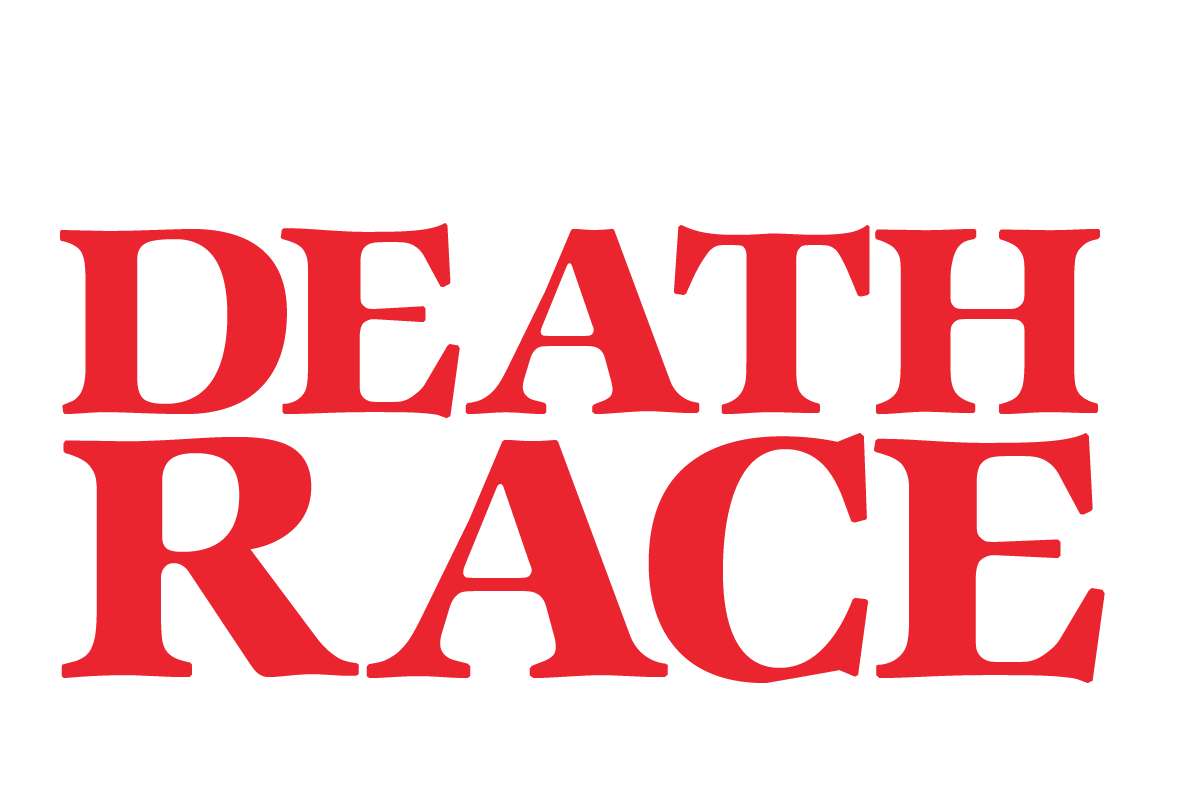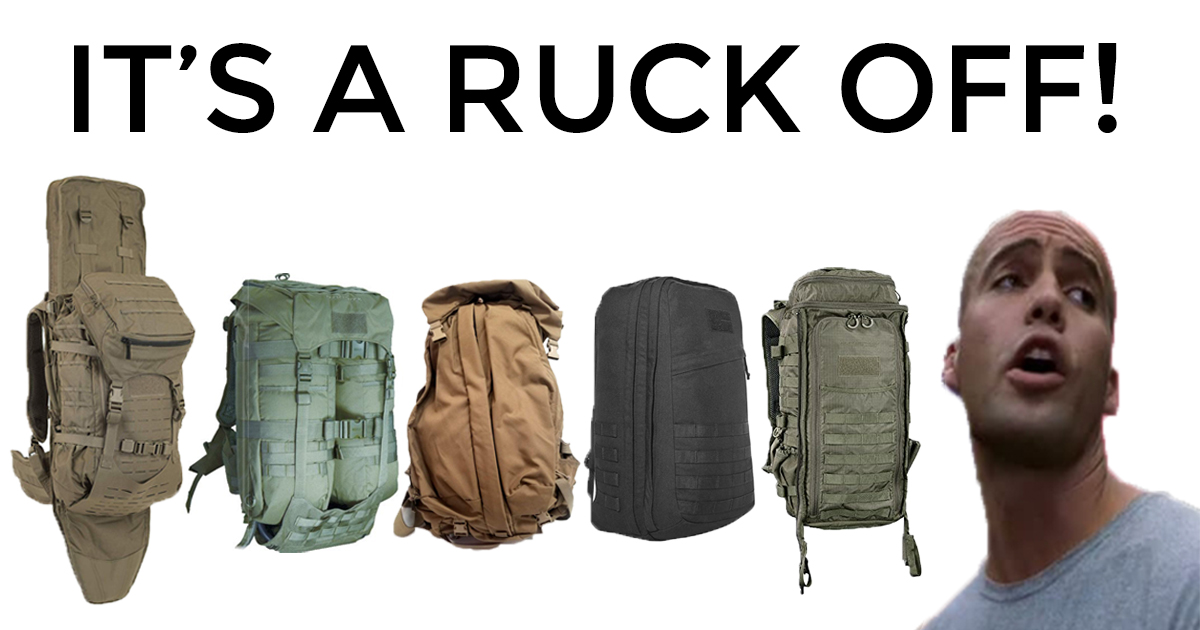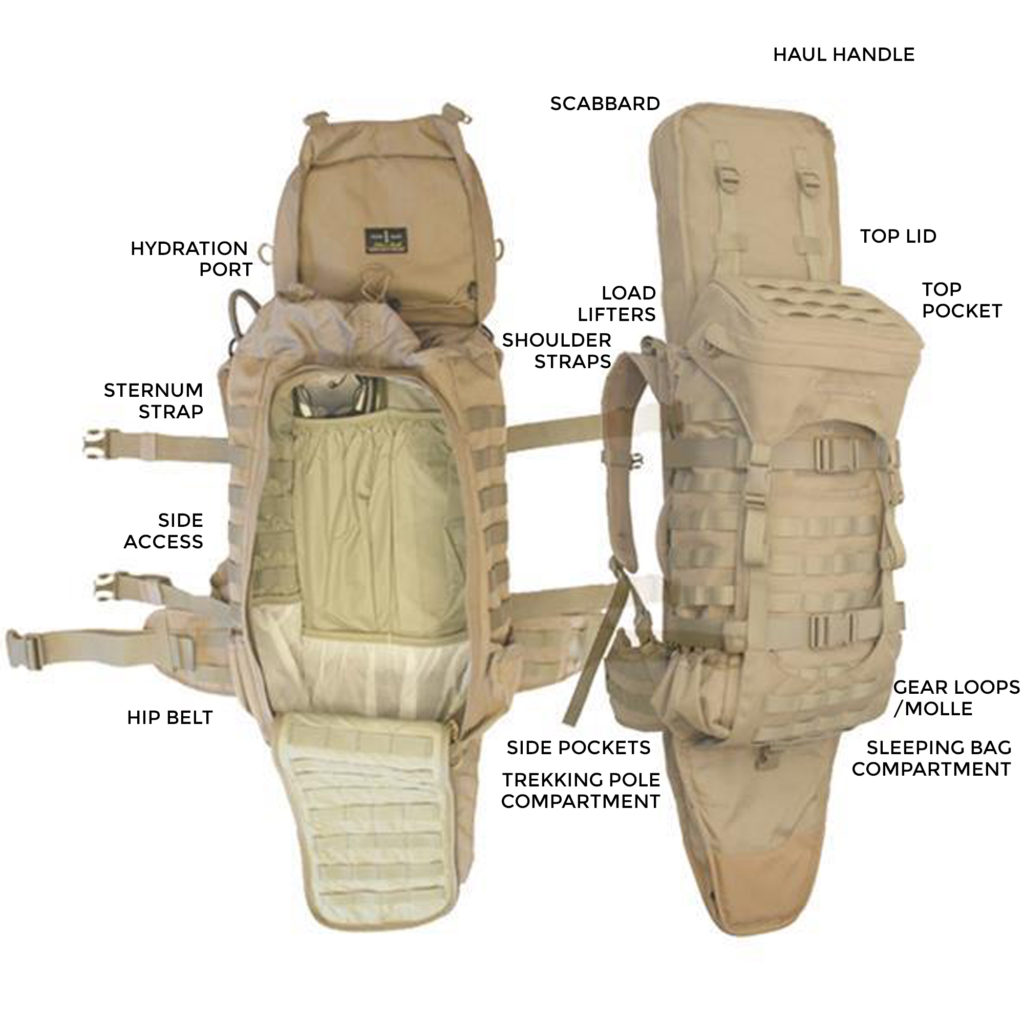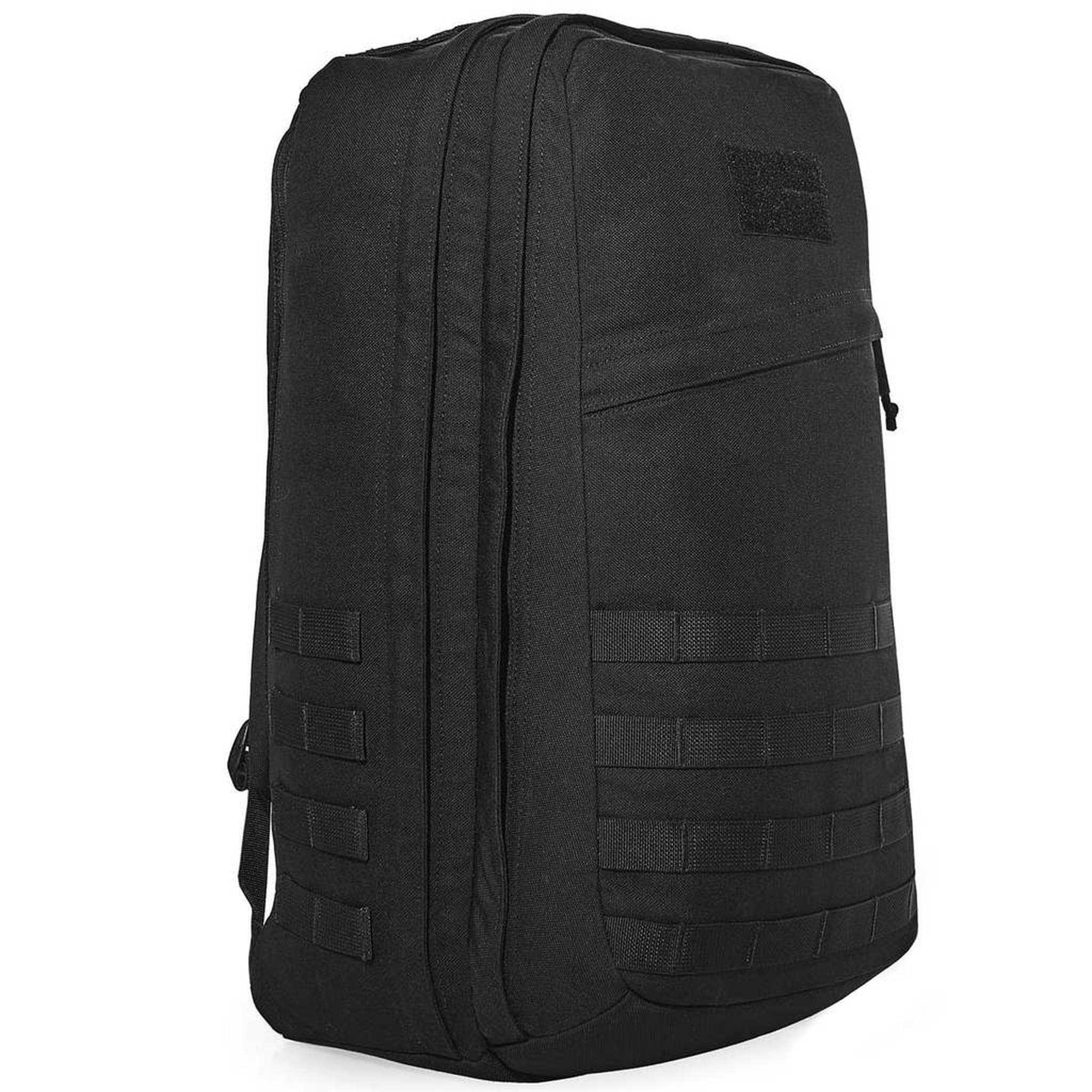When it comes to the Death Race, there’s one discussion that comes up every year when race season approaches.
Which ruck should I choose for the Death Race?
The reality is, there are a LOT of rucks that will get the job done, but there are a few standouts in the crowd that have made a name for themselves as the quintessential Death Race ruck. A majority come from leading military/hunting brand, Eberlestock.
What ruck would you choose for the Death Race and why?
#PeakRaces #peakDR #TheJourney #GreatestHits #YouMayDie #QuitNow #WeDontCare
Posted by Peak Races on Saturday, June 8, 2019
Before the 2019 Death Race, the Peak Races Facebook page posted the question, “What ruck would you choose for the Death Race and why?” In the comments, veterans from Death Race past (the period before it went into temporary retirement) chimed in with all kinds of answers. Here are a few that came up multiple times and some of the reasons why people prefer to use these rucks specifically for the Death Race. Ultimately which ruck you choose is up to you, but no matter which ruck you choose, make sure you test everything. Test every nook and cranny of your ruck, every strap, every buckle, every little pouch, know it inside and out BEFORE you arrive at your Death Race. Nothing says, “Rookie” more than a racer who can’t figure out how to secure a rock to their ruck or how to secure your hydration bladder to the top of the pack on the inside cavity.
There are a lot of parts to a rucksack. Make sure you know them all.
When it comes to selecting a Death Race rucksack or bacpack, one thing to consider is what the outer shell material is made of. Given the nature of these events, it is highly likely that you’ll encounter a situation involving but not limited to, crawling up a sketchy ravine under a web of dangling barbed wire, dragging your pack through a goat field, or tossing your ruck in a runoff pond. These are all things that CAN happen. You’ll want a material that can withstand some abuse. That’s why military-style rucks are preferred for this event, it’s the Cordura 500 material they use. That stuff is nearly indestructible.
These are some of the basic components you should know and understand when it comes down to selecting the perfect ruck for the Death Race.
All the Parts of a Rucksack or Backpack Explained
Frame
In the design of most modern backpacks specifically for multi-day hiking and trekking, you’ll find manufacturers usually include an internal frame to provide structure to the pack and of course provide added support to the person wearing the ruck. There are ultra-lightweight backpacks that save weight by ditching the frame. Nowadays, there are very few backpacks that have external frames, though they are still being manufactured. While both of these exist, both are not really recommended for the Death Race.
Load Lifters
Load lifters are the adjustable straps between the top of the shoulder straps and the rest of the pack. These straps are designed to help draw the weight of the pack closer toward your torso. Basically, the load lifters are there to help make the load feel lighter and to prevent any unwanted movement of the pack. When the load lifters are properly adjusted they help lift some of the pack weight off your shoulders. These straps create a much more comfortable backpacking experience.
Sternum Strap
With most rucks, the height of a sternum strap is usually adjustable up and down on the shoulder straps, Depending on your pack this may require more work to change than others. Almost always, however, the straps can be tightened and loosened across your chest. Many modern rucks and hiking packs will come equipped with a built-in emergency whistle, which can be super useful.
Hip Belt
One of the most important elements in any good ruck or hiking pack, a solid, comfortable hip belt should be standard. You want to find yourself a padded and breathable waistbelt that comes with adjustable straps to tighten or loosen your belt to the perfect fit. There are some high-end backpacks that now equip their hip belts with a pivot system that enables the load to move with you when you walk, rather than against you.
Hip Belt Pockets
Unfortunately, not all packs have hip belts that come equipped with hip belt pockets, but the ones that do provide a very useful and convenient location to hold the important gear that you may quick access to on the trail — like snacks, lip balm, a pocket knife, and index card, or a sharpie. Some military style packs have molle on the waist belt that will allow you to attach a pocket. When it comes to Death Race, this is a must-have, in my opinion.
Haul handle
The haul handle is designed to make it easier to pick up and move your bag from one spot to another quickly. All good packs come with some sort of haul handle incorporated. Make sure when choosing a pack that yours looks like it can handle all the weight of your pack.
Back Panel
The back panel of a good rucksack or hiking pack should be three things, comfortable, fully-supportive and 100% breathable. Many back panels come highly padded, and there are others that adopt a trampoline-style structure. These types have a mesh that is lifted off the pack assembly and it enables air to flow easily between your back and the rest of the pack.
Shoulder Straps
When it comes to shoulder straps you’re looking for something padded, shaped to your body, and breathable. The straps should also be adjustable at its base.
Shoulder Harness
When it comes to finding torso specific fit, you need a pack that allows you to adjust the shoulder harness of your backpack up and down. High-end backpacks or rucksacks will provide you with the option to change the width of the shoulder straps by adjusting the harness laterally.
Hydration Reservoir Sleeve
This sleeve is usually located inside the main compartment of a backpack. Most of the sleeves are large enough to hold at a minimum a 2 liters hydration reservoir, sometimes larger. Some of these sleeves have a clip or loop at their opening that attached to the reservoir and holds it in place.
Hydration Hose Port
If you want to use a hydration bladder, you’ll need a backpack that is specifically compatible with hydration bladders. The best kind should ideally have a port on top of the sleeve. The port or hole allows the hydration hose to be fed from inside the main compartment out near the shoulder strap where it is often fed through some sort of strap or elastic band along the side of either shoulder strap to allow the easiest way to drink on the move.
Hydration Hose Clip
Some hiking and multi-day backpacks will have a clip or attachment spot on the shoulder strap that holds onto your hydration hose. This prevents the end of your the hose from flopping around as you walk. Some are even magnetic.
Water Bottle Holder/Side Pockets
Any good pack will come with side pockets, they are most ideal for holding water bottles in a place that can be easily accessed without the need to take off your pack. Some are made from a mesh fabric or other lightweight fabric and usually have elasticated tops that help secure the contents of the pockets.
Compression Straps
A lot of packs will have built-in compression straps that are typically found on the sides and/or on the bottom of the pack. These types of straps can be utilized to secure additional gear to the outside of the pack while offering the ability to cinch down the internal contents in a manner that ensures the pack remains as compact and stable as possible.
Gear Loops/Daisy Chains aka MOLLE
Gear loops or MOLLE as it is referred to on military packs. MOLLE is an acronym for Modular Lightweight Load-carrying Equipment and it can be found in a variety of locations on the outside of many backpacks. These gear loops are used to clip on extra gear that you need easy access to. It’s a great way to bring along the things that don’t properly fit in your pack or the things that are just too wet or dirty to go inside the pack.
Ice Ax Loops
While an ice ax may not be needed for the Death Race (yet, at least) these loops can still be useful to secure gear to the ruck in creative was. These loops are usually found hanging at the bottom of a backpack, ice ax loops are designed to secure the head of the ax and then the handle gets secured to the pack via another attachment point or by the use of a built-in compressions strap.
Hiking/Trekking Pole Attachment
When it comes to long distance and mountains, one thing that helps more than anything is the aid of having some trekking poles. The thing is, you don’t always need them. You’ll want the ability to store your poles on your pack when you are not using them. This is key when it comes to hiking with trekking poles. On most packs, the attachment points might be buckled webbing straps, a bungee cord loop or some sort of built-in compression strap. Regardless of how the attachment point is designed, these points are often located on the sides or on the front of the pack.
Top Pocket
You’ll know you’ve found yourself a good pack if the top pocket is not only large but ideally it will also have some water resistance to protect the contents. These top pockets are essential, they prove to be a very useful place to store items you need to have easy access to when you only have a moment to stop.
Top Lid
The majority of these packs are designed to close by utilizing a collapsible lid that buckles down over the front of the pack. On some packs, the lids are adjustable which allows you to store extra stuff underneath the lid and on top of the main compartment. This can come in handy, especially at the Death Race. Others will allow you to remove the lid completely while the main compartment cinches tight. To have the ability to remove the lid and save weight when not necessary can be helpful, if it’s quick and easy to do.
Side Access
There are a lot of packs that will offer a separate side access point in addition to the top access to the main compartment, usually via a zipper. This access point makes organizing and accessing your gear simpler — it also really helps to make it easier to access the stuff stored at the bottom.
Sleeping Bag Compartment
On almost all packs the sleeping bag compartment is located at the bottom of the pack, these compartments allow access to things, typically your sleeping bag, but for a Death Race where you don’t sleep it can provide access to whatever you place at the bottom of your pack. On some packs, the compartment is totally separate from the main section of the backpack, while others are actually separated by a piece of fabric which can be zipped open or is even removable.
Rain Cover
If you pack comes with a rain cover that’s huge. Most packs do not come with this highly useful addition. The packs that do come with a rain cover typically design a dedicated pocket for it to be stored in. While some have the rain cover permanently attached to the pack, almost all of them are removable in some way.
Front Kangaroo Style Pocket
This is something that varies from one pack to the next, but kangaroo pockets are essentially these large pouches that don’t zip up or fully secure themselves closed. They are super convenient and an excellent way to temporarily storing things like jackets, maps, and gloves while you hike, basically anything you need to have access to quickly and easily.
Front Pocket
Many backpacks will come equipped with a zippered pocket on the front of the pack that is great for helping you stay organized. Quick access to your keys or your blue bag is nice.
The Best Rucks for Surviving the Peak Death Race
Eberlestock Gunslinger II
The Eberlestock Gunslinger II is my personal choice for the Death Race, but I wasn’t the first to comment about it, by the time I saw the post several others had suggested this Death Race classic. And how could they not? Even Death Race and obstacle race extraordinaire and professional athlete, Amelia Boone used the Gunslinger II back in her Death Race days.
Okay, cool story bro, celebrity Death Racers use it, but why?
What makes this pack so useful are the compartments it contains. Most importantly, at least back in my Death Race days, it was a given that you’d be chopping wood at the Death Race. Over the years this hasn’t remained a staple but in the early days it was, and because of that having a convenient place to store and access your ax is super nice! The Gunslinger II provides just that, on the backside of the pack is a storage spot specifically made for carrying a shotgun or rifle, which of course we Death Racers have instead repurposed into an ax carrier. The entire pack opens up for easy access, there’s a map compartment on the top of the top lid which contains multiple pockets. Each side has a bottle pocket. This pack has a built-in frame, sternum strap, and a super comfortable waist belt. With all kinds of molle, you can add any other storage compartments on that you may require, or use them to fashion a carrier for whatever obscure object you find yourself hauling up and down Joe’s mountain.
I highly recommend this pack.
Eberlestock Warhammer
Another Eberlestock favorite of Death Racers is the Warhammer. The super unique feature about this pack is it’s expandability, specifically when it comes to the use of a bucket. With the Warhammer’s unique structure, the two side compartments can be opened and strapped around a standard 5 Gal bucket and it actually creates a solid frame for the pack at the same time. When a bucket isn’t in use or isn’t need the pack closes in on itself. It’s pretty convenient from what I’ve seen at all the Death Races I’ve attended, whether as a participant, media guru, or race organizer. The users of this pack have raved about it’s transformer-nature for years and still, they sing it’s praises. From what I can tell, it seems like a solid choice, especially if there is a bucket on the gear list. This pack falls somewhere between the Little Brother and the Gunslinger II in terms of price. You could consider it a mid-high end pack.
Eberlestock Little Brother
This pack is essentially the Gunslinger II minus the full-width scabbard. It offers similar loading options with top loading and full frontal loading available. Little Brother has all the molle you need to strap anything else onto the pack, side pockets for a couple of Nalgene bottles, and straps for loading a sleeping pad, bag, or tent to the bottom of the ruck. All-in-all I’ve heard nothing but good things about this solid 72-Hour capable pack. It’s also significantly cheaper than the Gunslinger II.
Mystery Ranch SATL
Another ruck that I’ve heard talked about quite a bit during my time as a Death Race athlete was the Mystery Ranch SATL. A large ruck that can easily handle 72-hours of adventure, it’s not one I admittedly know as much about. It doesn’t have much molle, especially when compared to some of the previously mentioned Eberlestock packs. In my opinion, that’s a pretty significant con to this pack, having a lot of options for attachment points is crucial for all the MacGyvering you’ll be doing at the Death Race. You want flexibility so you can apply adaptability. This pack, when compared to the cheaper Eberlestock Little Brother just doesn’t seem like a good purchase. Feel free to convince me otherwise in the comments below.
GoRuck GR2
This is not a cheap ruck, but when you buy something that’s 100% Made in the USA by former Green Berets and comes backed with a Lifetime Warranty, it makes sense. Mind you, Eberlestock, also offers a Simple Lifetime Warranty and has a track record for taking care of their customers so that’s not that special in the world of rucks, most companies will back their product and will offer to either fix or replace your pack, if they don’t offer this, don’t bother.
As a ruck for the Death Race, there are a few die-hard GoRuck fans that absolutely love this pack and will use it for everything. Personally, I own one of these, I got it for a much cheaper price lightly used by a thru-hiker, and I don’t think I could see myself using this for a Death Race. The way this pack opens would be cumbersome in a lot of cases as I could see all my gear spilling out all over the place and just being difficult to keep organized. Don’t get me wrong, I love my GR2 and my GR1 but I don’t think I could see either being suitable for a Death Race.
Others obviously would disagree with me, so please if you like using your GR2 for a Death Race, tell us why in the comments below.







